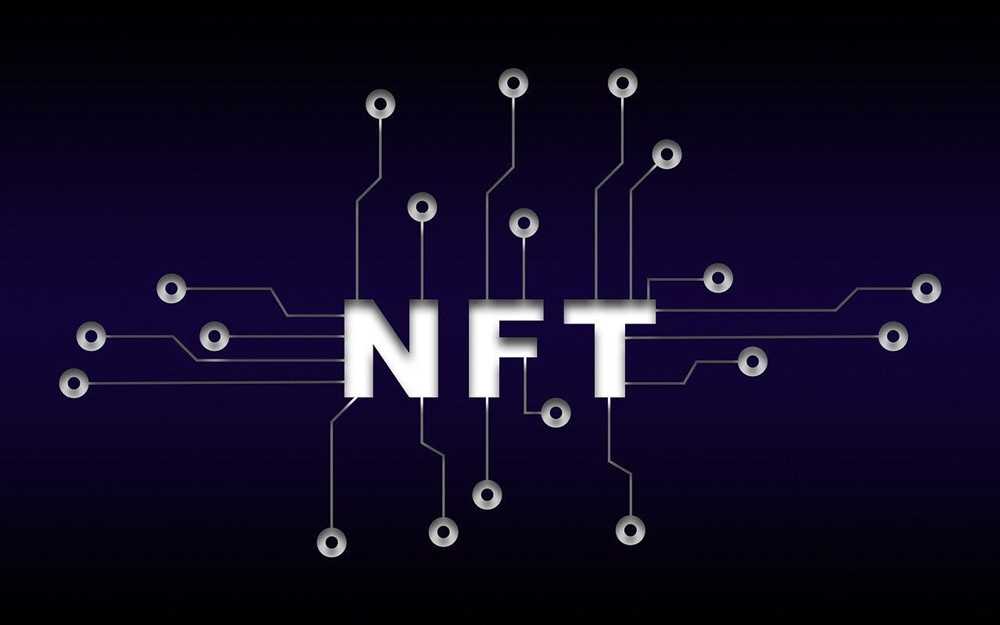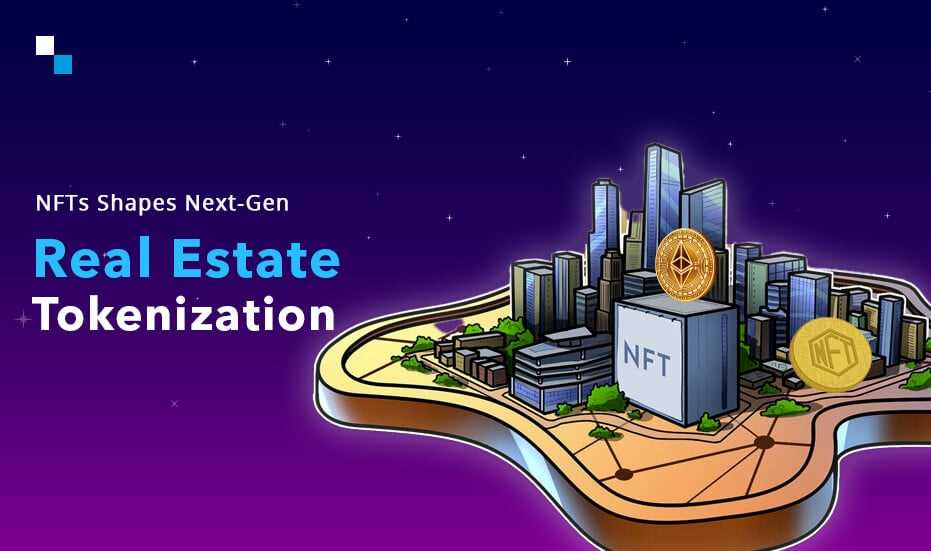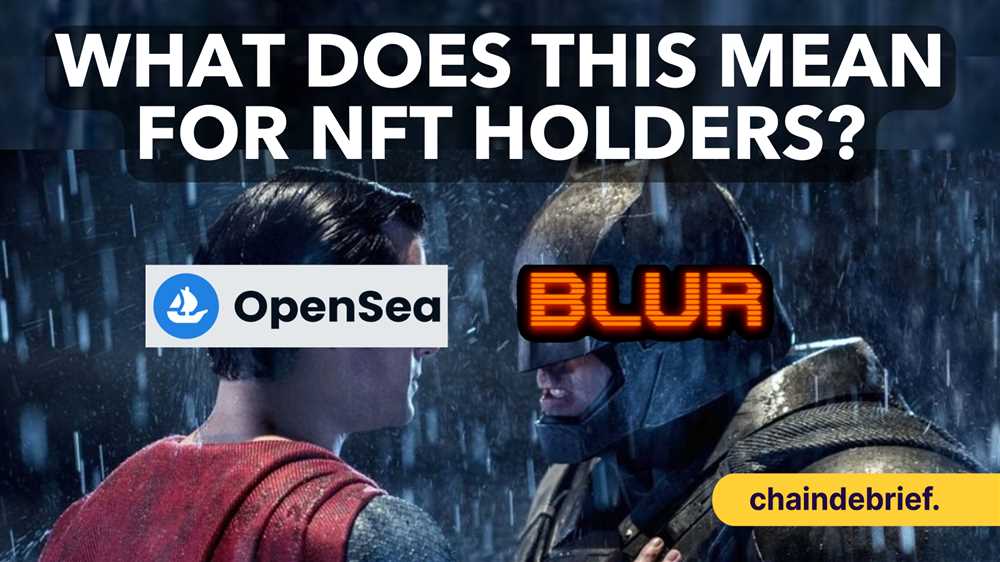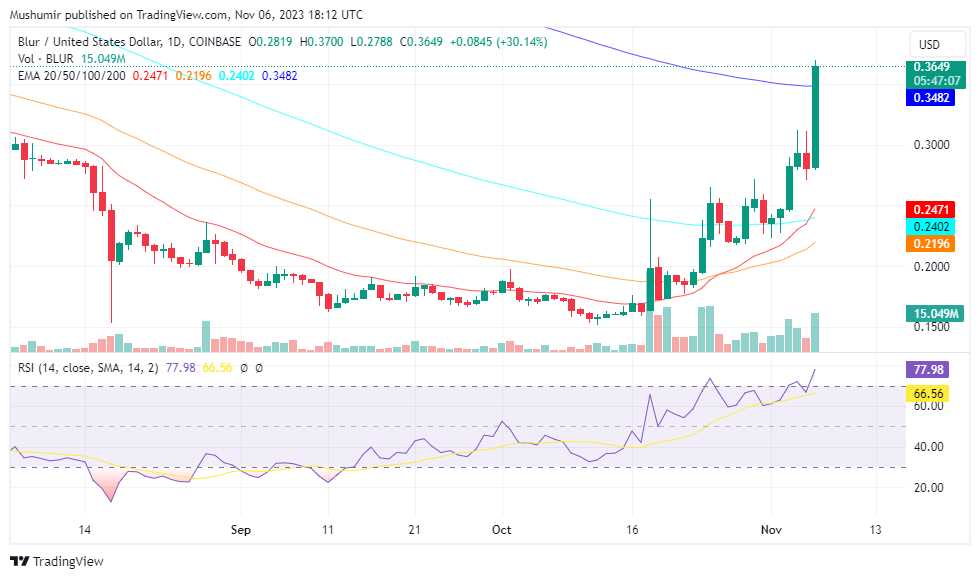
In the fast-evolving world of blockchain technology, a revolutionary concept has emerged that has captivated the imagination of artists, collectors, and investors alike: Non-Fungible Tokens (NFTs). By leveraging the power of blockchain, NFTs have opened up a whole new paradigm for the ownership and exchange of digital assets, paving the way for a digital revolution.
Unlike cryptocurrencies such as Bitcoin and Ethereum, which are fungible and can be exchanged on a one-to-one basis, NFTs are unique and indivisible. Each NFT represents a distinct digital item or piece of content, be it artwork, music, collectibles, or virtual real estate. This uniqueness is made possible by the underlying blockchain technology, which ensures that each NFT has a unique identifier and cannot be replicated or destroyed.
The potential of NFTs is vast and spans across multiple industries. For artists, NFTs provide an unprecedented opportunity to monetize their digital creations, as they can now sell their artwork directly to collectors without the need for intermediaries. This has democratized the art world, allowing artists at all levels of recognition to gain exposure and earn a living from their craft.
On the other hand, collectors and investors see NFTs as a way to diversify their portfolios and engage in a new form of asset ownership. Unlike traditional collectibles, which can be lost, damaged, or stolen, NFTs are stored securely on the blockchain, ensuring their scarcity and provenance. This has created a vibrant secondary market for NFTs, with some pieces selling for millions of dollars and attracting mainstream media attention.
Although NFTs have gained significant traction and popularity, questions remain about their long-term viability and the potential risks associated with their ownership. Issues such as copyright infringement, environmental impact, and market volatility need to be addressed to ensure the sustainable growth of the NFT ecosystem.
As we navigate through this uncharted territory, it is clear that NFTs have the potential to reshape not only the art world but also the broader digital landscape. By tokenizing digital assets, NFTs are creating new possibilities for creators, collectors, and investors, ushering in a future where the value of assets is no longer constrained by physical boundaries. As the technology continues to evolve, it is crucial to explore the potential implications and ensure that NFTs are harnessed for the benefit of all stakeholders involved.
The Rise of NFTs

An NFT is a unique digital asset that is stored on a blockchain, making it verifiable, immutable, and scarce. Unlike traditional cryptocurrencies such as Bitcoin or Ethereum, which are fungible and can be exchanged for one another, NFTs cannot be exchanged on a like-for-like basis as they possess unique attributes and characteristics.
The rise of NFTs can be attributed to several factors. Firstly, NFTs provide a way for digital artists to monetize their work and gain recognition. In the past, digital art may have been easily copied or shared without artists receiving proper compensation. With NFTs, artists can create limited edition digital artworks and sell them directly to collectors, ensuring that they are properly rewarded for their talent and creativity.
Another key factor driving the rise of NFTs is the growing interest in virtual worlds and gaming. NFTs enable players to own and trade in-game assets, such as virtual land, characters, or items. This adds a new level of ownership and value to virtual experiences and creates a vibrant marketplace for gamers and collectors.
Real-world applications and implications

The potential applications of NFTs extend beyond art and gaming. NFTs can be used to tokenize real-world assets, such as real estate, intellectual property, or even carbon credits. By creating a digital representation of these assets on the blockchain, it becomes easier to prove ownership, transfer ownership rights, and allow fractional ownership.
Moreover, NFTs can also have implications for authenticity and provenance. With the ability to trace an asset’s history on the blockchain, NFTs can provide a secure and transparent way of verifying the authenticity of artworks, collectibles, or any other asset that can be tokenized.
The future of NFTs

As the popularity of NFTs continues to rise, it is clear that they have the potential to revolutionize various industries and create new opportunities for artists, creators, and investors. However, there are also challenges and concerns that need to be addressed, such as environmental impact, copyright infringement, and market saturation.
Nevertheless, with ongoing developments in blockchain technology and increased mainstream adoption, the future of NFTs looks promising. The potential for NFTs to reshape the way we think about ownership, value, and digital assets is undeniable, and it will be fascinating to see how this space evolves in the years to come.
The Power of Blockchain Technology

Blockchain technology has emerged as a groundbreaking innovation with the potential to revolutionize various industries. It is a decentralized system that enables the recording and verification of transactions in a secure and immutable manner. The power of blockchain lies in its ability to provide transparency, efficiency, and trust in a trustless environment.
One of the key advantages of blockchain technology is its transparency. The blockchain is a distributed ledger that allows all participants in the network to have access to the same information. This transparency eliminates the need for trust between parties, as all transactions can be verified by anyone in the network. This is particularly beneficial in industries where trust is crucial, such as finance and supply chain management.
In addition to transparency, blockchain technology offers enhanced efficiency. Traditionally, financial transactions or other record-keeping processes involve intermediaries and a time-consuming verification process. With blockchain, transactions can be processed and verified automatically, eliminating the need for intermediaries and reducing delays. This efficiency not only saves time but also reduces costs, making blockchain an attractive solution for businesses.
Moreover, blockchain technology introduces trust in a trustless environment. Trust is built into the blockchain through a consensus mechanism, where all participants in the network agree on the validity of transactions. This system eliminates the need for a trusted third party, such as a bank, to oversee transactions. The decentralized nature of blockchain ensures that no single entity has control over the network, making it resistant to censorship and fraud.
| Transparency | Efficiency | Trust |
|---|---|---|
| Provides access to the same information for all participants | Processes transactions without intermediaries and reduces delays | Builds trust through consensus and eliminates the need for third parties |
In conclusion, the power of blockchain technology lies in its ability to provide transparency, efficiency, and trust. By leveraging blockchain, industries can benefit from greater transparency, streamlined processes, and enhanced security. As the technology continues to evolve, its potential applications are endless, and the future of blockchain looks promising.
Unlocking Value through Tokenization

Tokenization, a process that involves converting real-world assets into digital tokens, has the potential to unlock significant value in various industries. By representing assets as tokens on a blockchain, tokenization creates new opportunities for ownership, trading, and investment.
One of the key benefits of tokenization is increased liquidity. By breaking down tangible assets into smaller, more divisible units, tokenization enables fractional ownership. This fractional ownership makes it easier for individuals to invest in assets that were previously out of reach or tied up in illiquid markets.
Moreover, tokenization allows for seamless transfer of ownership. Unlike traditional asset ownership, which involves complex paperwork and intermediaries, tokenized assets can be easily and securely transferred between parties through smart contracts on the blockchain. This simplified transfer process not only reduces transaction costs but also enhances transparency and reduces the risk of fraud.
Tokenization also opens up opportunities for new revenue streams. With tokenization, individuals and organizations can monetize their assets in different ways. For example, artists can tokenize their artwork and sell it directly to collectors, cutting out intermediaries and reaching a global audience. Real estate owners can fractionally tokenize their properties, enabling individuals to invest in prime real estate without the need for large amounts of capital.
Furthermore, tokenization can revolutionize the concept of ownership. Instead of a single entity owning a particular asset, tokenization allows for decentralized ownership through the distribution of tokens to multiple stakeholders. This concept of decentralized ownership has the potential to transform industries like intellectual property, where creators can tokenize their work and retain ownership rights while still benefiting from its value.
In conclusion, tokenization has the power to unlock value by making previously illiquid assets more accessible, enabling seamless transfer of ownership, creating new revenue streams, and revolutionizing the concept of ownership itself. As the technology behind tokenization continues to evolve, we can expect to see its impact across various sectors, shaping the future of finance, art, real estate, and more.
What are NFTs?
NFTs, or Non-Fungible Tokens, are unique digital assets that are stored on a blockchain. Unlike cryptocurrencies such as Bitcoin or Ethereum, which are fungible and can be exchanged for one another, NFTs cannot be exchanged on a like-for-like basis as each token has its own distinct value.
How are NFTs used?
NFTs are used in a variety of ways. They can be used to represent ownership of digital collectibles, such as artwork, music, videos, or virtual real estate. NFTs can also be used to authenticate and verify the authenticity of physical items, such as limited edition sneakers or designer clothes.








Leave a Reply